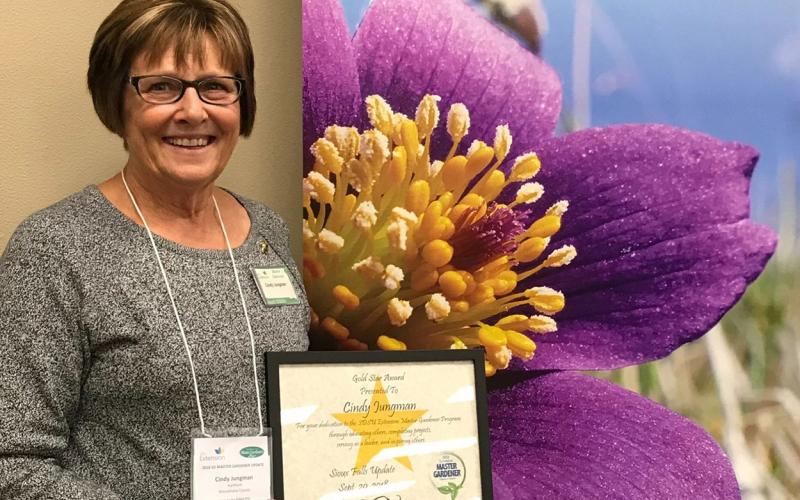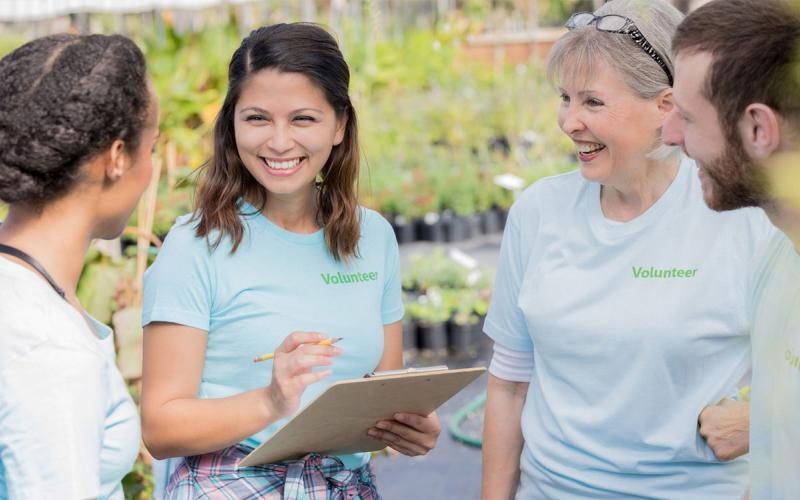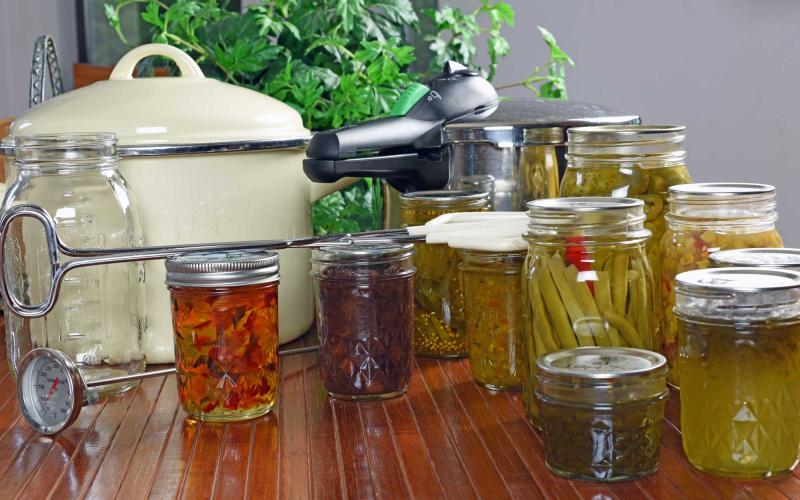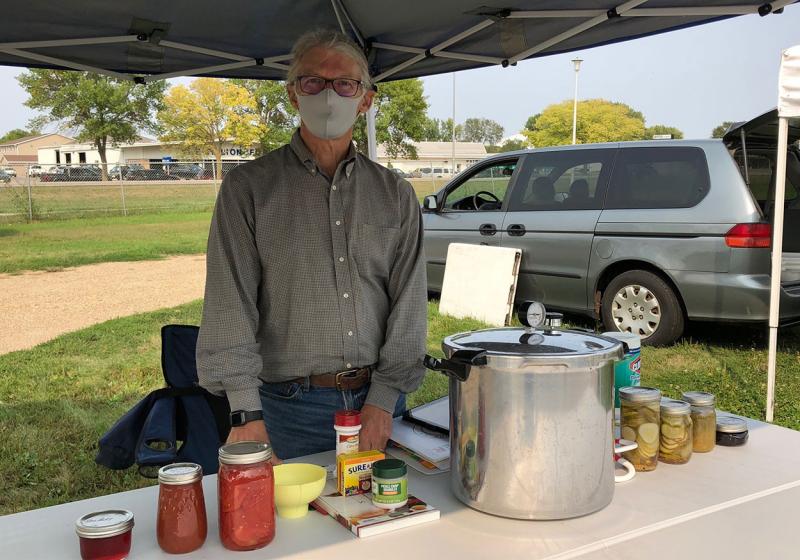
Growing up in the late 1950s, early 1960s in Aberdeen, Tim Schreiner can’t remember a summer that went by where his mother wasn’t busy canning and preserving. The kitchen pantry was always stocked full of jars of tomatoes, sauces, pickles and other produce harvested from the family garden. While eager to sample the final product, Schreiner admits he wasn’t an active participant in his family’s food preservation efforts.
“As a kid, the last thing you want to do is sit in the kitchen with your mother, or at least it was for me. I wanted to play baseball or something, but I was always around it and definitely appreciated it,” Schreiner says.
A culinarian at heart, Schreiner also has an appreciation for fresh picked produce. After graduating from the University of South Dakota and working for various television stations from South Dakota to Utah, Schreiner secured a job at the Argus Leader and was able to put down roots in Sioux Falls for a bit. He bought a house and started a garden.
“I think I planted a little bit of everything. I mean, there were radishes and beans, corn for sure, squash, zucchini, tomatoes — of course, my favorite fruit,” Schreiner says. “I planted just about everything I could get my hands on, just to see what was going to work and what wasn't going to work. It was a pretty fertile garden, so it worked really well.”
However, Schreiner soon found he had to put that hobby on hold as his professional career took off. From reporting and editing for USA Today, the San Francisco Chronicle and the Oakland Tribune to publishing and directing a series of home magazines, websites, books, videos and digital media, Schreiner’s work took him across the country, but didn’t leave much time for backyard gardening. Wanting to “give something back” to the field of journalism, Schreiner then served as a professional-in-residence and student media adviser at Louisiana State University’s Manship School of Mass Communications before retiring in 2016.
Moving back to South Dakota became part of the plan, Schreiner says, and in 2018 he and his wife, Ruth Hamel, returned, settling in the Yankton area. With time now on his side, Schreiner could get back to gardening again.
“It's a little bit smaller, just because of where we live, and I have raised beds, so they're incredibly fertile,” Schreiner says. “I compost everything. I use all my scraps when I cook, like the skin on an onion, that sort of thing, and I put the vegetables in the freezer, and I make broth out of it. Then, when I make the broth, because it's vegetable broth, I put it into the composting, so my raised beds are pretty rich with compost.”
Schreiner also makes his own tomato supports and has been trying to strategically plant for sun optimization. While Schreiner says he’s not an expert, he admits he is getting better at the pastime and learning quite a bit.
“I think I’m a little more sophisticated about what I’m growing and how I’m using the ground,” Schreiner says.
That thirst for knowledge led Schreiner to the SDSU Extension Master Gardener Volunteer Program in 2019. The program develops gardening enthusiasts into expert volunteers who share their research-based knowledge with community members across the state. Over 300 South Dakotans currently hold the title of Master Gardener.
"I think the more volunteers we have, the more Master Gardeners and Master Food Preservers, it will just make growing food and preserving food in South Dakota that much better.”
To become a certified Master Gardener, volunteers must complete 40 hours of training, pass a test and then commit to 40 hours of volunteer service in their community. To maintain that status, Master Gardeners must report 20 volunteer hours and 10 hours of continuing education annually. With 16 Master Gardener Clubs across the state, many Master Gardeners choose to partner together on larger-scale educational efforts, such as community gardens and community education events.
“There's that primary motivation initially, I'm going to learn how to do this right for myself, but the spirit of the program is that you're going to help other people,” Schreiner says.
This past year, due to the pandemic, Master Gardener volunteer opportunities have been limited, however, Schreiner was able to help plant and landscape at the Lewis and Clark Recreation area. Visitors and campers at the park would often come by and remark on the work being done.
“It's really nice to think you're adding something to that effort, what other people are doing, whether those efforts are the state making a beautiful park, or somebody planting a tree in the front yard, or somebody planting a garden or somebody saving what they produced in their garden,” Schreiner says.
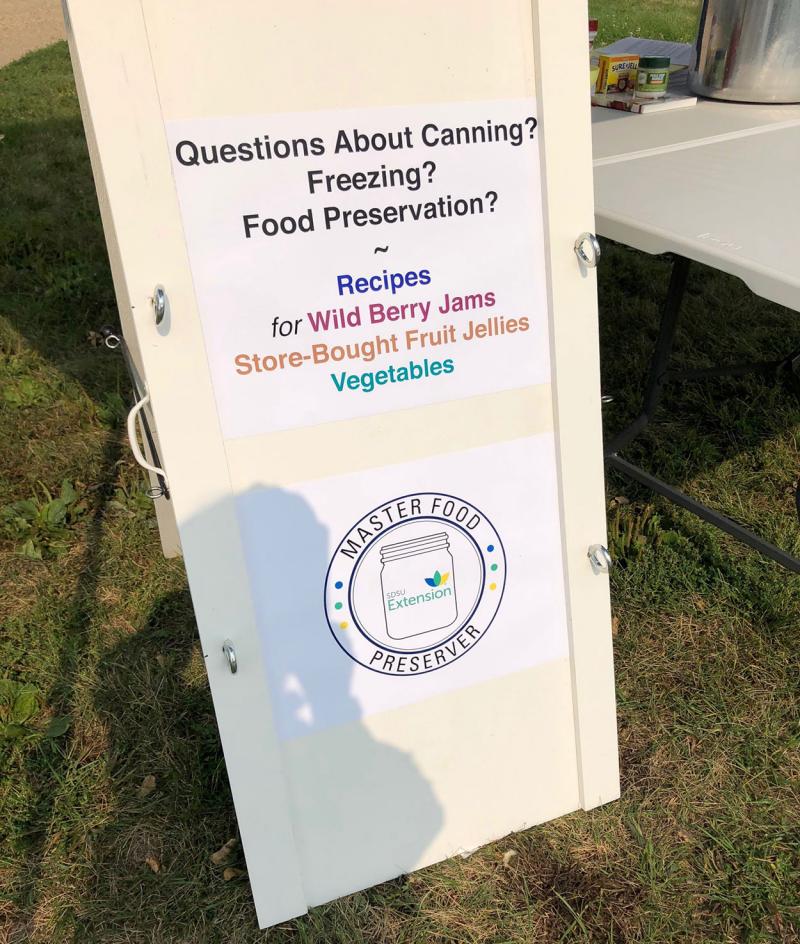
After becoming a Master Gardener, Schreiner decided to broaden his expertise, this time as a Master Food Preserver. Similar to the Master Gardener Volunteer program, Master Food Preservers help extend SDSU Extension’s food preservation efforts by teaching community classes, staffing displays at events and serving as a resource for food safety related questions.
Launched in 2020, the Master Food Preserver Volunteer Program instruction was held entirely online. Schreiner was one of 12 volunteers from across the state selected to be in the first class. The training consisted of a self-paced, seven-module online food preservation course followed by participants submitting a video debuting their food preservation skills from start to finish for an SDSU Extension audit.
Once certified, Schreiner wasted no time in getting out and educating South Dakotans. While he couldn’t teach a class in a community kitchen due to COVID-19 protocols, he found a perfect opportunity to help educate at the Vermillion Area Farmers Market. Every Thursday, Schreiner set up a booth with canning and preserving supplies and a book full of educational resources and recipes, ready to field preservation questions such as:
- “I canned, and now barely any of my jars sealed. What do I do?”
- “I have a raspberry bush, and I would like to make raspberry jelly. How do I do that?”
- “I have an abundance of cucumbers. What can I do with them?”
- “How do you prepare produce for the freezer?”
Whether volunteering as a Master Gardener or a Master Food Preserver, Schreiner says the interaction with people and seeing that “light bulb” moment after a conversation is really the fun part of the programs.
“I'm looking forward to the day, and I'm not sure if that would be this year or next year, when I can have a class be in the kitchen, where I teach people how to preserve the produce from their garden,” Schreiner says. “I’m looking forward to the human contact, helping people face-to-face, that is the fun part of this, and that was missing in 2020, and I’m looking forward to getting to that part of it again, which, I think, is the spirit of the whole Master Gardeners, Master Food Preserver Volunteer effort.”
Schreiner recommends South Dakotans consider signing up for one or both volunteer programs.
“It's a good way to keep your mind active. It’s a good way to increase your own knowledge of this hobby that you love. It's a good way to meet other people who are interested in the same things that you're interested in,” Schreiner says. “The more volunteers we have in the state, the better dissemination of this information for all the people who need it and want it. I know there are hundreds of people out there wondering what the heck do I do about this thing that is going wrong in my garden, and for whatever reason, they don't know about Master Gardeners or they don't know Master Gardeners. I think the more volunteers we have, the more Master Gardeners and Master Food Preservers, it will just make growing food and preserving food in South Dakota that much better.”
